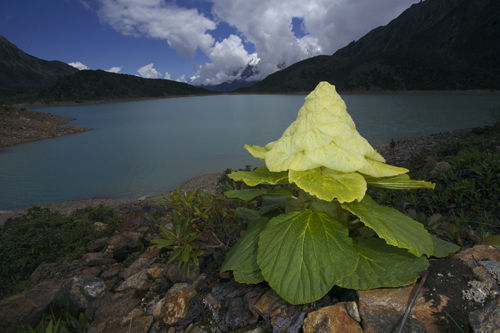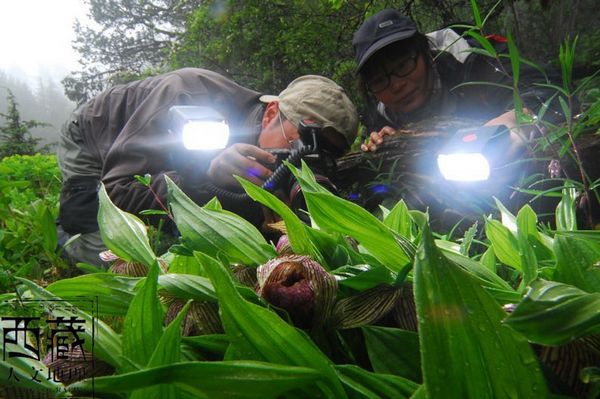Editor's Notes: In Oct.-Nov. 2010 and June-July 2011, the Tibet Tourism Co. Ltd and the Institute of Images Biodiversity Expedition (IBE) jointly launched two investigations along the Yarlung Zangbo Grand Canyon areas to search for and record the rare and endangered wildlife there.
The investigations were mainly centered in the southeastern part of Tibet, the Mailing County, river banks of the Yarlung Zangbo River and the Yarlung Zangbo Grand Canyon Scenic Spot.
Following are the major achievements made and photos taken during the second survey.

A snow lotus found along the Yarlung Zangbo Grand Canyon areas. [Photo/http://www.tibet-g.com/]

Researcher are working in the Yarlung Zangbo Grand Canyon areas. [Photo/http://www.tibet-g.com/]
As the deepest and longest canyon in the world, the Yarlung Zangbo Grand Canyon is home to many animals and plants which are barely explored and affected by human activities. With unique geography, the Canyon becomes one of the areas with the most abundant biological resource and is regarded as "the key hole to the door of the Earth's history" by the scientists.
"The ecological environment is well-preserved in the Yarlung Zangbo Grand Canyon Scenic Spot. You can see abundant species there and it is easy to encounter many large creatures", said Xu Jian, head of the investigation group.
Like the Meili Snowy Mountain area and the western part of Sichuan Province, the Yarlung Zangbo Grand Canyon occupies a large area of well-preserved primitive forest. The birds of the genus family and large creatures are most frequently encountered in the area.
"It shows the primitive environment has been well preserved since it is barely affected by human activities," said Xu Jian.
